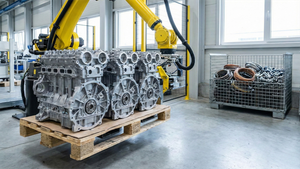
SPONSORED CONTENT -- (StatePoint) Whether you’re popping the question and looking for the perfect engagement ring or you want to gift yourself a piece of timeless jewelry, you may be wary about purchasing a diamond. Not only does diamond mining harm the environment, human rights abuses associated with the industry may have you thinking twice about sporting this type of bling. The good news? Technology advances are changing the game.
“Lab-grown diamonds are quickly gaining popularity, and there’s a good reason for that -- they have the exact same physical and chemical properties as naturally occurring diamonds, but are ethical, sustainable and much more affordable,” says Jay Grdina, CEO of Adamas One, a lab-grown diamond manufacturer that produces near flawless, single-crystal diamonds for gemstone and industrial applications.
If you don’t know much about lab-grown diamonds, let these answers to some of the most commonly asked questions serve as your guide to a growing industry:
Are lab-grown diamonds, “real” diamonds? Yes. Lab-grown diamonds have the exact same composition as Earth-mined diamonds and are certified and graded using the same process, one that assesses each gem by cut, color, clarity and carat.
Why is diamond mining harmful? Traditional diamond mining is inefficient. For every carat of diamond mined, nearly 100 square feet of land is disturbed and almost 6,000 pounds of mineral waste is created. This has wreaked ecological havoc throughout Africa and other parts of the world. What’s more, the industry is plagued by forced labor, child labor and human rights abuses, and mined diamonds are often sold to finance war, terrorism and organized crime. For these reasons, mined diamonds are often referred to as “conflict diamonds” or “blood diamonds.” On the other hand, lab-grown diamonds don’t support mining malpractices and have a much smaller carbon footprint.
Will I have the same choices when shopping for lab-grown diamonds? Like naturally-occurring diamonds, lab-grown diamonds come in different colors, shapes and sizes, allowing you to get the exact look you want.
How are lab-grown diamonds made? The two primary methods for creating diamonds are the high-pressure-high-temperature (HPHT) method and the chemical vapor deposition (CVD) method. Adamas One employs a patented CVD method and proprietary technology to produce high-quality, high-purity Type IIA diamonds in a few weeks or less.
What are the other benefits of lab-grown diamonds? No diamond is free, but due to the shorter supply chain, lab-grown diamonds can be anywhere from 30-60% less expensive than mined diamonds, making them a far more accessible gemstone alternative. And because diamonds are one of the toughest substances on the planet, they have a number of important industrial applications, including computing. As a result, lab-grown diamonds have the potential to help drive down costs for devices too, and make this industry more green and ethical.
To learn more, visit www.adamasone.com.
“A growing number of consumers today know that luxury and symbols of love don’t have to come at the cost of human lives or the health of the planet,” says Grdina. “Fortunately, there is no longer a need for people to compromise their ethics when buying and wearing the jewelry they love.”
Photo Credit: (c) megaflopp / iStock via Getty Images Plus






